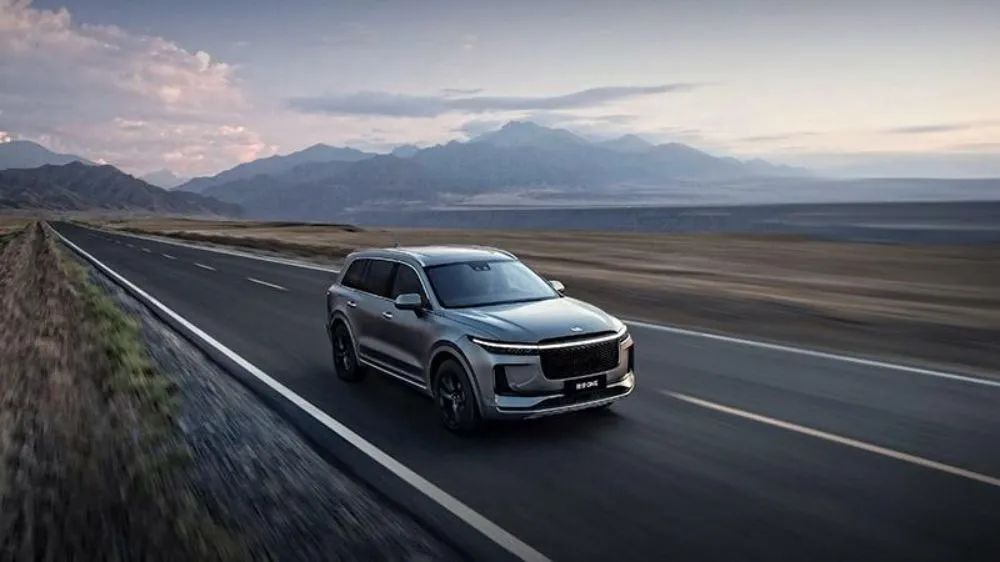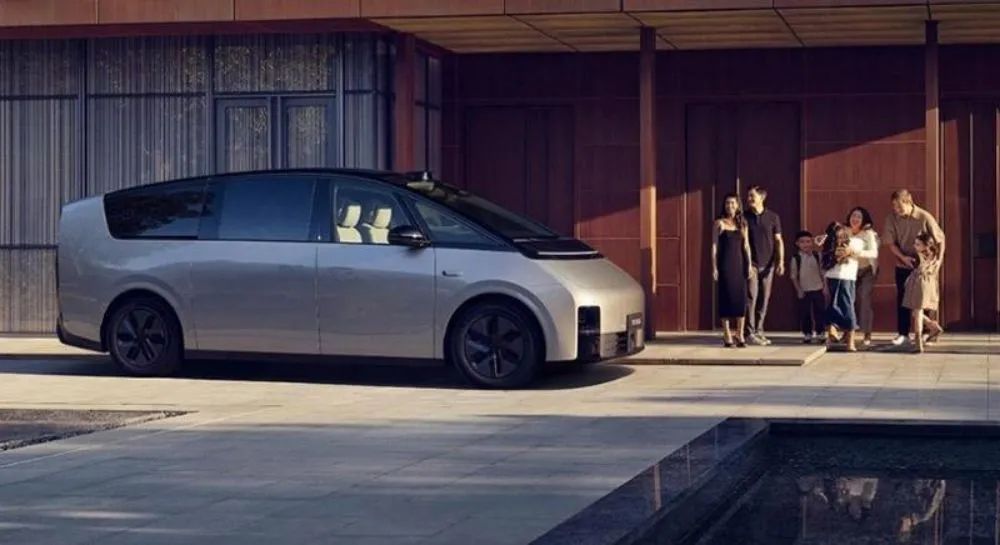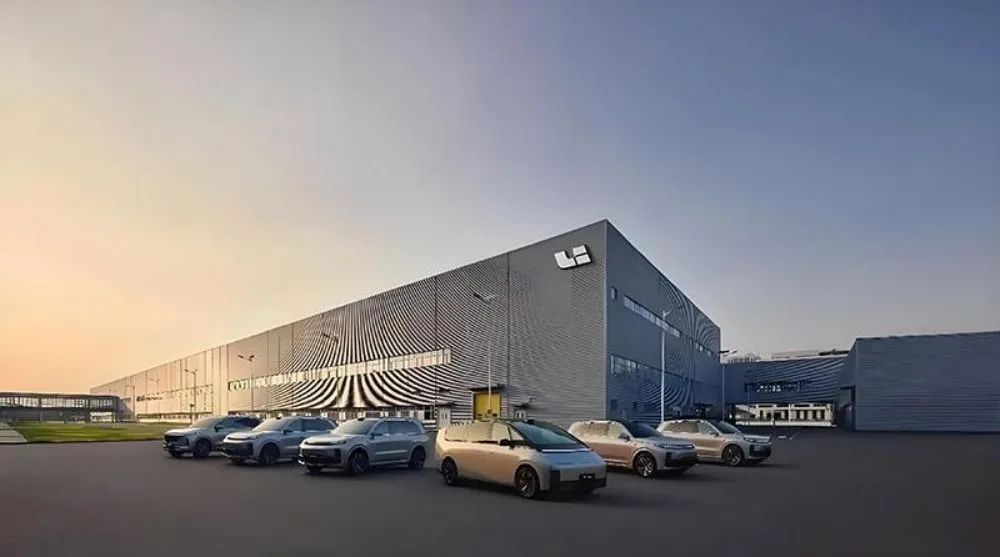Thoughts after reaching one million vehicles, Li Auto
![]() 11/05 2024
11/05 2024
![]() 588
588
How to win the battle of pure electric vehicles
Author | Shengma Finance Xin Zimo
Editor | Ouyang Wen
Recently, Li Auto rolled off its one millionth vehicle at its Jiangsu Changzhou base, becoming the first new energy vehicle company in China to reach this milestone. In terms of speed, from the first Li ONE rolling off the Li Auto Changzhou plant in November 2019 to the current one million vehicles, Li Auto took less than five years, and just over nine years since its establishment.
In comparison, NIO, which started mass production earlier, has just surpassed 600,000 total sales; XPeng, which also started mass production earlier, has just surpassed 500,000 total sales. Even compared to the world's most dominant brand, Tesla, Li Auto is not inferior. In 2020, Tesla surpassed one million cumulative vehicles, taking 17 years since its establishment and 12 years since the delivery of its first vehicle; while BYD took a full 13 years to go from 0 to one million vehicles.
Currently, Li Auto has won multiple titles, including being the first new energy vehicle company to turn a profit and the third globally to achieve profitability. So, as a member of the new energy vehicle industry, why has Li Auto been able to stand out? At a recent supplier conference, industry insiders revealed that Li Auto has a plan to accelerate to two million vehicles. How likely is this to be achieved? What challenges will the company face next?


Reaching the one million vehicle milestone: How did Li Auto do it?
Looking back at Li Auto's development journey, the industry has long summarized its path to success, mainly involving family-oriented positioning, route selection, and a robust supply chain.
In the early stages and even now of new energy vehicle development, range anxiety remains a concern for many car buyers and owners, and the extended-range route is the optimal solution at this stage. However, in the early days, Li Auto's extended-range technology route faced many doubts. In the automotive industry's pecking order of hybrid systems, multi-speed plug-in hybrids looked down on single-speed plug-in hybrids, which in turn looked down on extended-range systems. Doubts such as "lack of a technological moat" and "extended-range is not pure enough" were constantly heard.
Now, six years later, extended-range systems are quietly transforming into a new engine for automakers to compete for sales growth. Various automakers have successively laid out their strategies, with Wenjie and Zero Running closely watching from behind, but Li Auto, relying on its first-mover advantage, still firmly holds the top spot in the extended-range market.
In addition, a large part of Li Auto's success lies in its deep understanding of the core needs of family users for space, configuration, range, safety, etc., truly demonstrating what user-centric thinking means. Moreover, in the brand's marketing and communication, Li Auto fully showcases trendy lifestyles such as camping, surfing, fishing, and bonfires, deeply exploring the "family" positioning, making it difficult for family users to refuse.
The data also shows that Li Auto's first product, the Li ONE, has surpassed 210,000 cumulative deliveries, the family six-seater flagship SUV Li L9 has surpassed 210,000 cumulative deliveries, the family six-seater luxury SUV Li L8 has surpassed 180,000 cumulative deliveries, and the family five-seater flagship SUV Li L7 has surpassed 220,000 cumulative deliveries. In the new energy vehicle market priced above 300,000 yuan, from 2023 to the present, the total deliveries of the Li L7, Li L9, and Li L8 models rank first, second, and third in their respective market segments.
From the production side, Li Auto has built two factories in Changzhou and Beijing, with ample production capacity. In recent years, among many new energy vehicle companies, there have been frequent incidents of sales declines due to supply chains unable to keep up with delivery schedules. According to reports, the Li Auto manufacturing base in Wujin District, Changzhou City, Jiangsu Province, can produce a vehicle every 40 seconds on average, with 90 new vehicles rolling off the production line every hour and a daily production capacity of 1,800 vehicles.
In addition, the company is also proud of its supply chain system. Meng Qingpeng, Vice President of Li Auto's supply chain, recently said in an interview with the media that the company's supply chain construction has entered its third stage after pursuing quality and increasing the number of suppliers. The company uses digital construction to drive collaboration with the supply chain, and once there is a market adjustment, information can be synchronized with suppliers at any time.


After reaching one million vehicles, how to win the battle of pure electric vehicles?
In fact, besides competitors, the industry and market are more concerned about how Li Auto will proceed next and how long it will take to reach two million vehicles, comparing Li Auto's path to success.
So far this year, Li Auto has launched the new models L6 and L7. The family five-seater luxury SUV L6 has surpassed 110,000 cumulative deliveries since its launch in April this year, setting a new record for the fastest deliveries among new energy vehicle companies. However, the L7's cumulative sales for 2024 are 97,943 vehicles, with the latest monthly sales at 12,731 vehicles, a significant decline from the peak of 20,000 vehicles.
According to Meng Qingpeng, Vice President of Li Auto's supply chain, the potential of the L6 has not yet been fully realized, with current monthly sales around 25,000 vehicles. Internal decisions aim to reach 30,000 monthly sales next year. He said that the internal team will invest in expansion, and partners will also invest resources.
As of the end of the third quarter, Li Auto sold 341,800 vehicles this year. If Li Auto can maintain monthly sales of 53,000 vehicles in the fourth quarter to reach the goal of 500,000 vehicles, the rapid achievement of the second million vehicles will not be a significant challenge. However, it is worth noting that in March this year, Li Auto innovatively launched its first pure electric vehicle, the MEGA, positioned as a 560,000 yuan MPV. At the time, Li Auto set a sales target of 80,000 vehicles for the MEGA for the year, but in the first month after its launch, only 3,229 vehicles were sold, and only 1,145 in the second month.
The year 2024 was originally planned to be a big year for Li Auto's pure electric vehicles. According to its plan at the end of last year, the MEGA was launched in March, and three pure electric SUVs were to be launched in the second half of the year. Among them, the M9 and M8 will be mass-produced within 2024, and the M7 is expected to be mass-produced in the first quarter of 2025. In February this year, Li Xiang, the founder and CEO of Li Auto, expressed confidence that this year would be an unprecedented product year for Li Auto, with four extended-range electric and four high-voltage pure electric models on sale by the end of the year.
However, due to pricing and sales expectations being misaligned, Li Auto's first pure electric vehicle did not meet its target. According to the latest plan, the launch of Li Auto's pure electric SUV models will be delayed to the first half of next year.
In fact, thanks to the strong performance of its extended-range products, Li Auto can continue to focus on the extended-range route at its current pace and easily cope with the current competitive landscape. However, the market waits for no one, and just as Li Auto has a first-mover advantage in the extended-range market, competitors also have their core competitiveness in the pure electric market. Slowing down even slightly could result in falling behind. Additionally, it takes time for new organizational structures to be polished and new products to be revised and refined.
For Li Auto itself, it will not remain in the comfort zone of extended-range products forever. Like most dominant automakers, they aspire to truly realize the strategic vision of "walking on two legs." Winning the battle of pure electric vehicles is a challenge that Li Auto must face next.

Shengma Finance notes that Li Auto does not currently have an advantage in charging infrastructure. The company originally planned to have over 2,000 supercharging stations online by the end of this year, but as of September 30, only about 900 were online (including 2C, 4C, and 5C piles). In comparison, Tesla currently has 2,000 supercharging stations in China; XPeng had over 1,300 by the end of July; Zeekr has 1,275 self-built stations, including 608 800V supercharging stations; and NIO has 4,023 charging stations and 2,556 battery swap stations.
It can be seen that while reaching one million vehicles has indeed boosted morale at Li Auto, there are still many severe challenges to face and resolve in the pure electric vehicle market next.
Original content created with sincerity by Shengma Finance. Unauthorized reproduction is prohibited.







